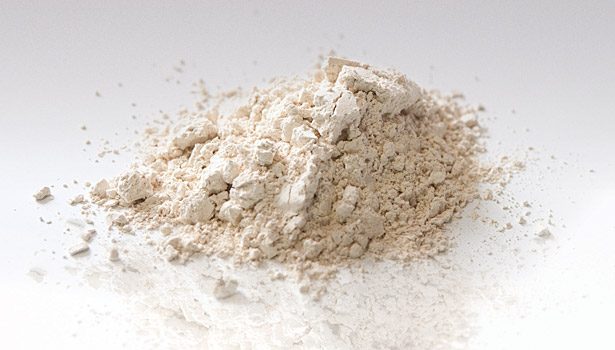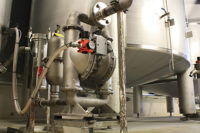Since 1982, Idaho Milling and Grain has produced wheat flour in a process that involves measuring, milling, and mixing. The industrial-grade wheat flour is then formulated into a glue extender for the wood products industry.
Glue extenders are used to bond thin sheets of layered wood veneer that form structural plywood. These rugged compounds are also key elements in adhesives, sealants, coatings, plastics and cleaning compounds.
By replacing its existing ribbon blender with a Munson model 700-TS-110-MS rotary batch mixer, Idaho Milling was able to reduce glue extender production time from two hours to 20 minutes per batch cycle. What’s more, product quality improved, and residual material in the machine after each batch was practically eliminated.
Uniform Blends
The flour production process begins when raw wheat stock arrives from local farms during harvest. The wheat is tested for moisture and protein, blended to a specific protein content, and cleaned to remove foreign seed, sticks, chaff, and other residue. Next, it is tempered by adding water to toughen the bran coat. The wheat is then milled into glue extender by running it through a series of roller mills, sifters and purifiers. It travels by pneumatic line into the 110-cu-ft (3.1-cu-m) capacity rotary batch mixer, where it is blended with other proprietary ingredients. The finished extender is then conveyed pneumatically to storage bins for packaging.
As head miller, Boyd Hess is responsible for production, maintenance and shipping. With a 28-year work history with Idaho Milling and Grain, Hess credits the rotary batch mixer with blending flour at greater efficiencies and with significantly less residue than the company’s previous, hand-fed ribbon blender.
“The rotary batch mixer produces much more uniform blends, even with diverse particle sizes and variations in bulk density,” says Hess. “This is due to the mixer’s tumble, turn, cut and fold action achieved with proprietary internal mixing flights, and continuous rotation throughout the blending cycle.
“The blending system from milled product through to packaging is controlled by a programmable logic controller (PLC),” he says. A recipe is entered into the PLC, which starts with a zero-scale reading from load cells under the mixer. The pneumatic system feeds each ingredient from several bins through airlocks until all ingredients are added and the mixer load reaches its target weight. When the airlocks shut off, the mixing action begins, lasting from three to 10 minutes, depending on the product density. Afterward, the mixer discharge gate opens, and the discharge airlock valve meters the material through the pneumatic line to the packaging area until the load cells again indicate zero weight. The glue extender is packaged in 50- and 100-lb (23- and 45-kg) bags and bulk bags up to 3,000 lb (1,361 kg).
Reduced Production Time
A 3,000-lb (1,361-kg) batch of formulated wood products extender is loaded, mixed and discharged for packaging in less than 20 minutes, compared to a typical batch cycle time of two hours using the ribbon blender. “The batch size varies depending upon the recipe and the rate of charge and discharge through the airlock system, but the entire operation is quick and energy efficient,” says Hess. “Another plus is that there is nearly complete discharge without residue. In filling a 3,000-lb bulk bag, only three or four pounds of residual material remains in the mixer, if that.”
For more information, call (315) 797-0090, email info@munsonmachinery.com or visit www.munsonmachinery.com.






